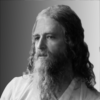From the unreal, lead us to the real.
From darkness, lead us to light.
From death, lead us to immortality.
Above is an ancient prayer from the yogic tradition that is fascinating to me for several reasons. First, it states that our current level of consciousness is unreal, dark, and morbid. Second, it suggests there is a state that is real, light, and immortal. Third, the prayer is in the third-person plural, implying that the path from our current state to the latter state is undertaken communally. Let’s examine these three aspects of this prayer and determine whether it has relevance for our lives and times.
To begin with, we are presented with the notion that our current state is unreal, illusory, not based in sanity. This is a difficult teaching at first as we all hold a certain resoluteness that we understand the hard facts of life and the way the world operates. Yogic philosophy presents a different vision of life and the world than that held by most people.
Yoga says reality has three components: satyam, it is eternal; shivam, it is inherently kind; and sundaram, it is beautiful. Most of us do not actually experience ourselves, others, or our world as being eternal, kind and beautiful. We are, therefore, living in an unreal state. This unreal state is a sort of mental illness known as avidya, spiritual confusion.
Since the illness of spiritual confusion is mentally based, the healing of the illness also takes place in the mind. The first step in this healing is to loosen our stubborn grip on the way we define people and events. We expend tremendous energy reinforcing a particular viewpoint about who we are and who others are in relationship to us.
Recognize that this perception of the world is limited, relative, subject to change, and frequently not conducive to peace or joy. We also find our perception about the nature of reality often conflicts with someone else’s perception. This difference in confused perspectives is, in essence, the birthplace of human conflict, from the ordinary little hassle to the immense conflict of war.
When I was growing up I was warned by adults me that someday I was going to have to make my way in “the real world.” This chastisement was intended to prepare me for life in a competitive and vicious world. As one of my relatives put it, only half-kidding, “Do unto others before others can do unto you.”
What we find in yoga is that this view of life as a battlefield is simply a misperception generated by minds in spiritual confusion. If we can remind ourselves that our anger, jealousy, and anxiety are based on an unreal, fear-based viewpoint we have a better chance of walking the path that will lead us to the real vision of eternal kindness and beauty.
The darkness referred to in the second line is indicative of the feeling of being small and alone in a big, uncaring world. Every one of us has had to deal with feelings of loneliness and impotency. In fact, the more mature and sensitive a person, the more painful is the loneliness. This loneliness, however, is a pathway to spiritual communion.
It is a pathway to be honored, not avoided.
Too often we run from our loneliness, distracting ourselves with the latest and the greatest. The yogis encourage us to dive into the loneliness, face it with our full being, and find how the loneliness is born and develops. Then we see that it is based on bodily identification. By identifying ourselves solely with our physical bodies, we overlook the vastness of our connection with everything in creation. It is as if a wave on the sea looked around and thought itself distinct and independent of all the other waves, vulnerable to the bigger waves and fearful of the calamity of being consumed by the ocean.
This brings us to the third line of the prayer, the transition from a consciousness of death to one of immortality. The key to transcending the sense of being just a wave and feeling one’s connection to the entire ocean is to de-program consciousness from physical identification. Virtually all of us identify ourselves almost exclusively with our bodies, with the result that our life story begins at a certain date and could end at any time, even without our consent. This identification with the body breeds a fear of death and, eventually, even a fear of change. We desire to live, to live well (as we define “well”), and to live securely. Life, however, is filled with change and our desire for security brings us into opposition with very the nature of Nature.
To resolve this dilemma and transcend physical consciousness is not an easy matter. It takes a combination of practice and service. Practice means engaging in a consciousness-elevating technique, such as yoga or meditation, on a regular, steady basis. This will help shift our awareness so that we become increasingly in touch with the vastness of our own being. We acknowledge that we have physical bodies, of course, while we also come into contact with our minds, hearts, and souls. Regular practice asks us to become disciplined, little by little, until practice becomes as regular and as ordinary as brushing one’s teeth.
Service is expressed in a willingness to steer our lives into an attitude of caring about others. One of my teachers taught that spirituality simply means giving more than you take. Becoming more of a giver and less of a taker is something accessible to all of us. Service helps us recognize that from one point of view we may be individual waves, but it is equally true that we are as one in the depths, and that we rise and fall together.
This brings us to my third point of interest, the plural nature of this prayer. In the yogic tradition, satsang, gathering together for truth, is deemed an invaluable and necessary component of spiritual development. Invaluable because it is so precious to be with a group of people who are earnestly attempting to grow out of their selfishness and are willing to support one another; necessary because no one is intelligent and brave enough to progress on the spiritual path without assistance. It is a beautiful fact that to grow out of our selfishness we need friends to help us, and whom we can help in return.
In all too many social communities, people support each other’s anger and grievances. Common enemies are identified and cliques are formed. In satsang, community is based on supporting each other in sadhana, spiritual practice, and seva, service to others.
Spiritual practice is something we can all do. It doesn’t have to be a big deal. Take 10 minutes a day and dedicate it to cultivating wisdom and compassion. The techniques you use may change with time while the development of wisdom and compassion will only deepen. If you take 10 minutes a day for sadhana, at the end of the year you will have devoted 52 hours to your spiritual growth. You can’t help but improve your quality of life with that kind of effort. Just imagine what our world would be like if more people spent 52 hours a year cultivating peace.
Seva, or service, is nothing less than learning how to feel good. If you believe you need to get in order to be happy, you will frequently find yourself miserable since there is always so much more to get. If you believe your happiness lies in giving, you will frequently find yourself joyful as there is always more to give. You don’t need to be phony-holy or anything like that, just a little more considerate and kind. Don’t underestimate the profound healing power of kindness. Expressing this innate kindness through service is a gift to others and to yourself.
I have been contemplating the opening prayer for some 35 years. At first it was just a seed of ideas, then a thorn that made me work and grow, finally it has become a flower, constantly unfolding and revealing new beauty. For many of us this is an accurate description of yoga practice: learning a new skill, followed by regular practice, followed by ease and beauty.
Yoga is a path to the real, the light, and the immortal in you. Contemplate yogic ideas, develop a regular practice, and enjoy who you are. Bring your reality!




